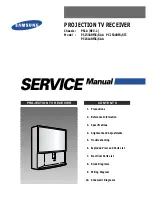
5
Notes for proper soldering
5.1
Preheating and cooling
The average ramp-up rate must not exceed 3
°
C/s.
The cooling rate must not exceed 8
°
C/s.
5.2
Repair / rework
Manual soldering with a soldering iron must be avoided, hot-air methods are recommended for
making repairs.
5.3
Cleaning
All environmentally compatible agents are suitable for cleaning. Select the appropriate cleaning
solution according to the type of flux used. The temperature difference between the components
and cleaning liquid must not be greater than 100
°
C. Ultrasonic cleaning should be carried out
with the utmost caution. Too high ultrasonic power can impair the adhesive strength of the metal-
lized surfaces. Insufficient or excessive cleaning can be detrimental to CeraDiode performance.
5.4
Solder paste printing (reflow soldering)
An excessive application of solder paste results in too high a solder fillet, thus making the chip
more susceptible to mechanical and thermal stress. This will lead to the formation of cracks. Too
little solder paste reduces the adhesive strength on the outer electrodes and thus weakens the
bonding to the PCB. The solder should be applied smoothly to the end surface to a height of
min. 0.2 mm.
5.5
Selection of flux
Used flux should have less than or equal to 0.1 wt % of halogenated content, since flux residue
after soldering could lead to corrosion of the termination and/or increased leakage current on the
surface of the CeraDiode. Strong acidic flux must not be used. The amount of flux applied should
be carefully controlled, since an excess may generate flux gas, which in turn is detrimental to sol-
derability.
5.6
Storage
Solderability is guaranteed for one year from date of delivery, provided that components are
stored in their original packages.
Storage temperature:
25
°
C to +45
°
C
Relative humidity:
≤
75% annual average,
≤
95% on 30 days a year
The solderability of the external electrodes may deteriorate if SMDs are stored where they are ex-
posed to high humidity, dust or harmful gas (hydrogen chloride, sulfurous acid gas or hydrogen
sulfide).
Do not store SMDs where they are exposed to heat or direct sunlight. Otherwise the packing ma-
terial may be deformed or SMDs may stick together, causing problems during mounting.
After opening the factory seals, such as polyvinyl-sealed packages, it is recommended to use the
SMDs as soon as possible.
CeraDiodes
High-speed series
Page 18 of 25
Please read Cautions and warnings and
Important notes at the end of this document.








































